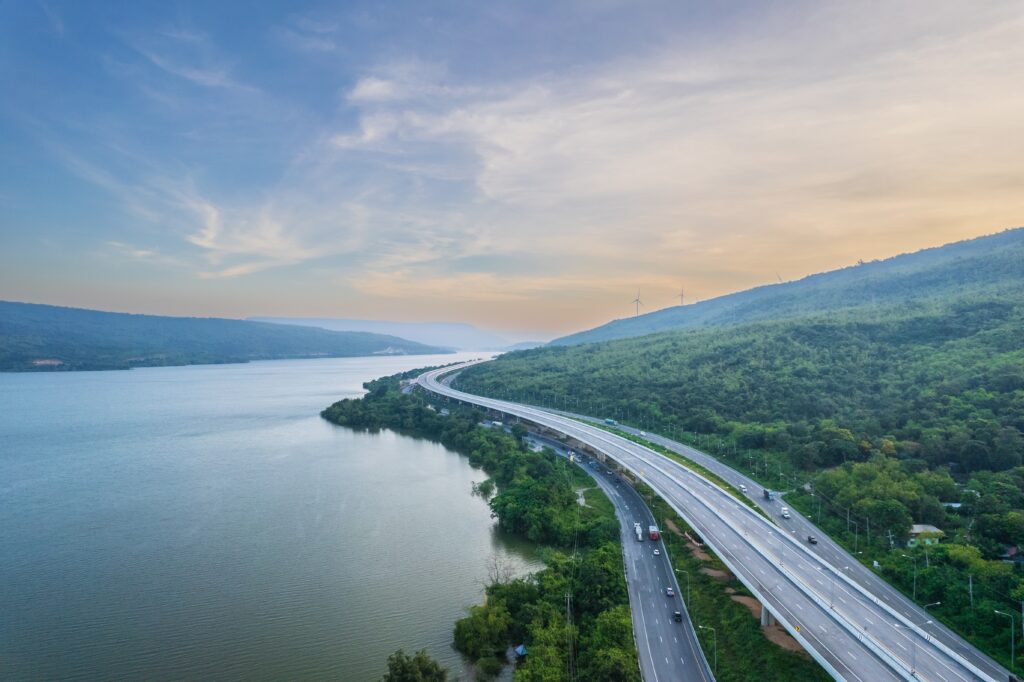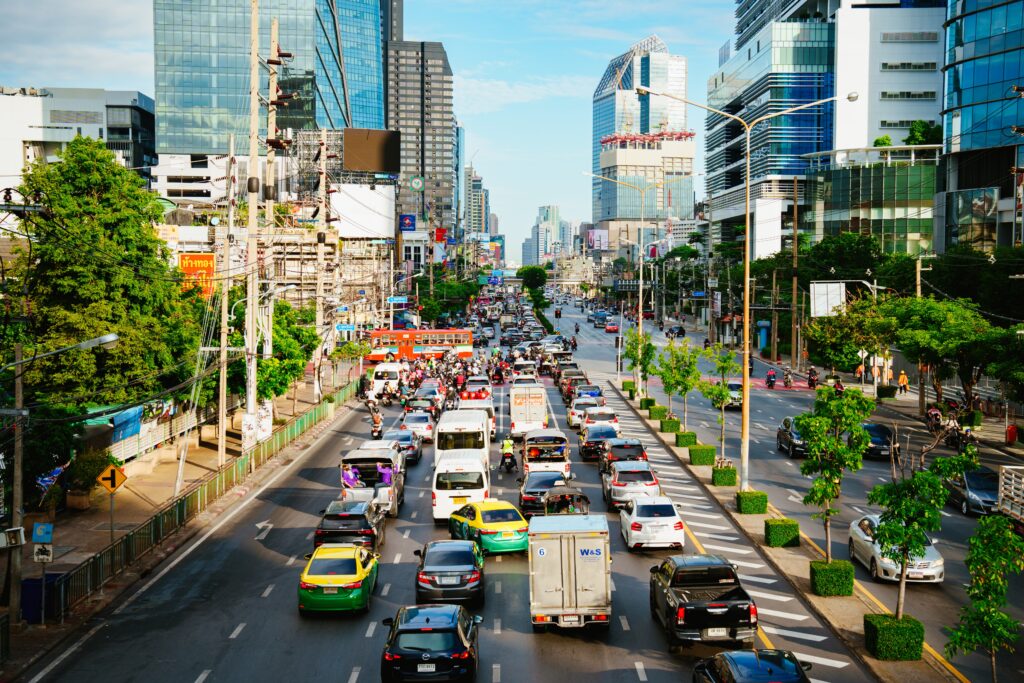From Bangkok’s fast-moving expressways to the highways connecting ports and tourist centers, Thailand’s road network carries millions of vehicles every day. These busy corridors depend on clear, reliable road markings to keep traffic flowing and drivers safe. Though they’re often overlooked, these markings are the backbone of road safety and order.
As Thailand continues to expand its infrastructure and urban areas grow denser, the demand for Thai road paint products that can withstand heat, humidity, and heavy traffic is stronger than ever. New paint technologies, developed to perform under tropical conditions and reduce maintenance needs, are helping road authorities meet these demands more effectively.
Thailand’s Transport Corridors: Unique Challenges
The transport routes across Thailand, especially within the Bangkok Metropolitan Region, are among the busiest in Southeast Asia, featuring a complex network of major roads, toll expressways, and elevated highways.
Beyond the capital, corridors such as the Eastern Economic Corridor (EEC) link industrial estates, deep-sea ports, and logistics hubs, while southern highways serve tourism hotspots like Phuket and Krabi.
These networks face several challenges that directly affect road marking performance. The country’s tropical climate brings high temperatures and heavy rainfall that can quickly wear away ordinary paint. Prolonged exposure to UV radiation causes fading, while the monsoon season tests the adhesion and reflectivity of markings on wet surfaces.
Traffic composition adds another layer of stress. Thailand’s roads carry everything from heavy trucks to high-speed cars and countless motorcycles weaving through lanes. Constant braking, turning, and tire friction grind down markings faster than in most temperate regions. Visibility at night and during storms is also a key concern—especially on highways and in areas with limited lighting.

Innovations in Road Paint Technology for Thailand’s Roads
Recent advances in road marking materials are helping engineers and municipalities keep up with these demanding conditions.
Thermoplastic road paints are now the go-to choice for many major routes. Applied in molten form, they create a thick, wear-resistant layer that bonds strongly to the pavement. Once cooled, thermoplastic markings can endure years of heavy traffic and temperature swings without significant fading or cracking. Their toughness makes them especially suited to expressways and intersections with high vehicle volumes.
To enhance safety, manufacturers are combining thermoplastic paints with specialized glass beads and polymer additives. The beads reflect headlights at night, while the polymers help maintain reflectivity even in rain or after months of wear and tear. Some high-end formulations are designed to remain visible when submerged under a thin layer of water—an essential feature during Thailand’s frequent downpours.
As the country strengthens its commitment to sustainable infrastructure, environmentally friendly coatings are becoming more common. These include low-toxicity formulations and recycled thermoplastic compounds that reduce environmental impact without compromising performance.
Practical Benefits for Thailand’s Heavy Traffic Environment
Advanced road paint technologies deliver several clear benefits for Thailand’s busy roadways.
- They extend repainting intervals, which means less disruption for drivers and lower maintenance costs for authorities. A well-applied thermoplastic marking, for example, can last two to three years on a high-traffic route, which is significantly longer than traditional solvent-based paints.
- The improved materials enhance skid resistance, an important safety factor on wet roads. Motorcycles account for a significant portion of traffic in Thailand, and lane markings with poor grip can easily cause slips during rain. High-friction paints help prevent these accidents.
- Faster-drying or quick-setting paints reduce closure times during maintenance. Crews can complete more work at night and reopen lanes before rush hour, minimizing congestion.
- Better reflectivity and color retention support smoother traffic flow by keeping lane divisions, arrows, and warning symbols visible in all conditions. On high-speed routes, these markings help drivers make split-second decisions that prevent collisions.
Thailand’s Growing Market and Regulatory Context
Government investment in Thailand’s transport infrastructure, including the Eastern Economic Corridor and national road projects, remains strong. Such projects call for road paint products in Thailand that provide both reliable safety and lasting performance.
At the same time, regulations are gradually tightening around environmental protection and worker safety. Agencies are moving away from solvent-heavy paints toward low-VOC and lead-free alternatives. This shift aligns with global trends, positioning Thailand as a regional leader in adopting sustainable materials.
Partnerships between local Thai manufacturers and experienced international suppliers are on the rise. Thermoplastic road paint exporters from countries such as the Philippines, Singapore, and Malaysia are collaborating closely with Thai producers to develop road paints specifically designed for Thailand’s unique weather and traffic conditions.

Case Examples and Market Trends
Across Thailand, several major projects have already adopted advanced road marking systems. Expressway Authority projects around Bangkok, for instance, use thermoplastic and preformed markings designed for long-term durability. Airports and port access roads are transitioning to high-reflectivity systems that maintain clarity even in rain.
The market for these coatings continues to expand in tandem with Thailand’s urban and industrial growth. As new highways, logistics centers, and tourist corridors are constructed, the demand for durable and safe markings increases in parallel.
Trade events, such as Surface & Coatings 2025 and Roads & Traffic Expo Thailand, play a crucial role in sharing the latest research, testing results, and product innovations with stakeholders from both the public and private sectors. These gatherings help spread awareness of performance standards and sustainability goals that are reshaping the industry.
Keeping Thailand’s Roads Safe and Moving Forward
Thailand’s transport corridors are the backbone of its economy—carrying people, goods, and tourists every hour of the day. Keeping them safe and efficient depends not just on engineering and design but also on something as straightforward as road paint.
Modern road paint products in Thailand are playing a key role in this effort. Thermoplastic paints stand up to the country’s tropical climate, advanced additives enhance visibility and safety, and eco-friendly formulas support Thailand’s growing focus on sustainable infrastructure.
As investment and urban growth continue, selecting the proper road marking materials will remain a crucial factor in maintaining safety, minimizing maintenance disruptions, and supporting the constant movement that characterizes Thailand’s roads. By embracing proven, climate-resilient paint technologies, Thailand can strengthen its transport corridors as clear, durable, and ready for the future.
Rua Seguridad supplies thermoplastic road paints built for Thailand’s climate and heavy traffic. Our products deliver long-lasting visibility, quick drying, and reliable safety performance.
Contact Rua Seguridad today to keep Thailand’s roads clear, durable, and safe throughout the year.



